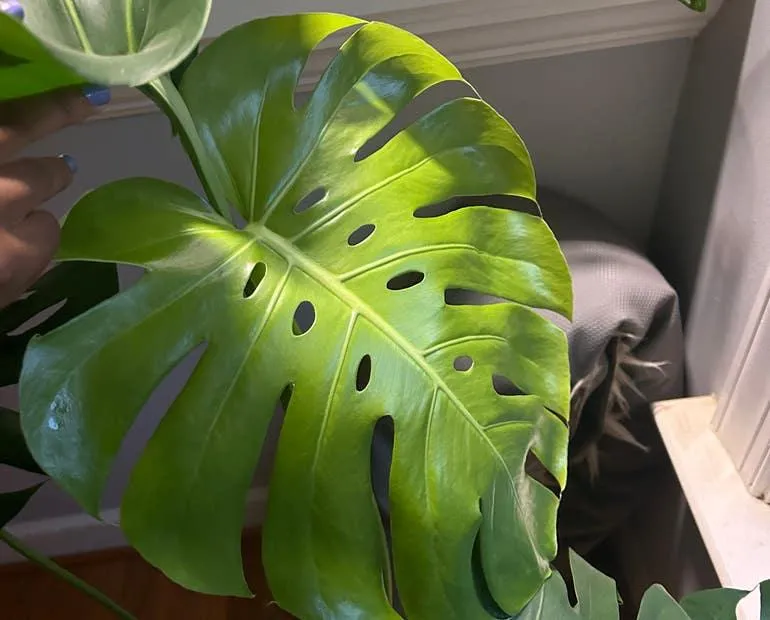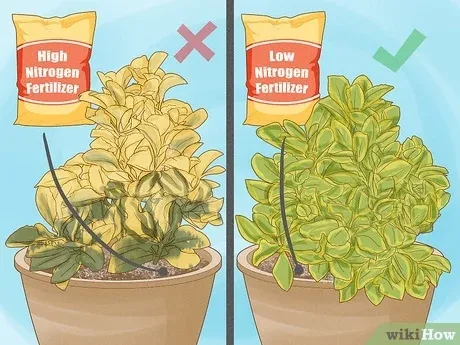How to Make Your Plant Variegated: A Complete Guide
If you want to add some visual interest to your houseplants by introducing colorful patterns or strips of white, yellow or pink, making them variegated may be just the solution. Variegation is a natural genetic mutation that causes sections of the leaves to lose their green pigment. This uneven chlorophyll distribution results in striking color contrasts. In this article, I’ll go over the different causes and methods of inducing variegation so you can transform your plants’ appearance.
Understanding Variegation
Variegation occurs due to errors in plant cells’ ability to produce chloroplasts, the structures that contain chlorophyll. Without this green pigment, other colorful compounds like carotenoids are left exposed, giving patches of the foliage other hues. There are two main types:
- Sections of individual leaves lose chlorophyll (sectored variegation).
- New leaves emerge partially or fully white, pink or yellow (stable variegation).
Variegation can develop spontaneously through genetic mutations or be inherited if a plant is propagated from a variegated cutting or seed. The trait tends to become more prominent with each new generation as well. However, inducing it artificially through propagation or environmental stresses is also possible.
Propagating Variegation
Taking cuttings or divisions from variegated sections of a plant is a straightforward way to cultivate more of the same. I’ve had good results rooting stem cuttings from the white or pink edges of variegated philodendrons. Be sure to remove any fully green leaves or stems so the new growth maintains the pattern. Variegation may fade over time without selective propagation, so keep an eye out for reversions back to all-green.
Inducing Variegation through Stress
Subjecting plants to stresses like temperature fluctuations, sun exposure or nutrient deficiencies has occasionally prompted the appearance of variegation. However, the effects are unpredictable and often temporary. Here are a few methods people have tried:
- Gradually acclimate a plant to increased sunlight, as too much too fast may scorch leaves. Morning or dappled light works well. Variegation sometimes intensifies as a stress response.
- Briefly expose foliage to freezing temperatures by leaving plants outdoors on a cold night. Frost or heat damage may cause sectors of albinism.
- Withhold fertilizer for several weeks to induce nutrient deficiency stress. Reapply balanced nutrients once variegation emerges.
- Experiment by air layering stem sections into new plants. The process of encouraging roots to form while still attached may provoke mutations.
While stress tactics have varied effects, true stable variegation is rarely induced this way. Any color changes may not be passed down reliably. It’s basically a crapshoot whether the plant actually becomes permanently variegated or just experiences temporary markings.

Chemical Variegation Agents
Horticultural researchers have investigated using certain chemicals to purposely induce variegation. Two frequently studied substances are sodium azide (NaN3) and ethyl methanesulfonate (EMS). They work by interfering with plants’ DNA to trigger mutations like variegation.
Application methods involve either soaking plant clippings, leaves or seedlings in weak solutions of the chemicals or painting them directly onto tissue. Safety precautions need to be followed carefully as both sodium azide and EMS are toxic. While they’ve shown promise in trials, success rates for stable variegation are low and effects haven’t been thoroughly tested on all plant species.
From my experience experimenting with chemical agents, any variegation induced was temporary and didn’t carry through to subsequent generations. It’s an intriguing area of research but still very much unproven for home gardeners. Permanently altering a plant’s genetics remains challenging without dedicated lab facilities.
Patience and Selection
For the home enthusiast, the most reliable routes to a variegated plant continue to be waiting for spontaneous mutations to occur or propagating from parent specimens already expressing the trait. Choosing healthy, vigorously growing cultivars and cultivating optimum growing conditions ups their chances of mutation.
Over successive seasons, carefully observe your plants for any sectored stripes, flecks or areas losing their green coloration. Isolate potential variegated sports by taking cuttings orair layering those sections for rooting. With time and selection of stable variegated sports, you’ll gradually develop an attractive cultivar all your own!
The quest for a variegated plant makes for an engaging multi-year project. But is all that effort really worth it just for novelty foliage? In the end, a plant’s beauty lies as much in its healthy growth habits as any surface patterns. Perhaps appreciating each specimen for its inherent character matters more. After all – mother nature decides what she decides!

Frequently Asked Questions
Here are some additional answers to common questions about variegation:
Will variegation affect a plant’s growth?
Sometimes variegation coincides with slower growth rates or lower vigor. Less chlorophyll means reduced photosynthesis. Severely variegated plants may struggle. But subtle patterns usually don’t impede a plant.
Can variegation spread or disappear over time?
Variegation expression can change as a plant ages. More may appear in maturity or fade on older leaves. Propagating from consistently variegated new growth ensures the trait remains stable.
Is variegation hereditary in seed-grown plants?
Variegation bred true from seed is rare, but possible if a variegated mutant is used as one parent. Offspring are most often all-green however. Taking cuttings best guarantees perpetuating the characteristic.
Can variegation be reversed once it shows?
Unfortunately, firmly established variegation can’t be corrected or reversed once present in a plant. It’s a total genetic change not affected by subsequent treatments.
I hope this overview answered your questions about how plant variegation occurs and the different methods for inducing or perpetuating it. Please let me know if any part needs more clarification! I’m always happy to expand on plant science topics further.

Tips for Creating Variegated Plants
| Plant Type | Propagation Method | Success Rate |
|---|---|---|
| Succulents | Leaf cuttings | High |
| Pothos | Node cuttings | Moderate |
| Coleus | Stem cuttings | High |
| Spider Plant | Pup plantlets | High |
| Peperomia | Leaf cuttings | Moderate |
FAQ
-
What causes variegation in plants?
Basically, variegation happens because of a genetic mutation that causes chlorophyll production to be uneven. This results in some plant tissues remaining white or yellow while others develop green color.
-
How do I know if a plant variety will be variegated?
You would have to check if the plant variety has a history of producing variegated leaves. Sometimes the plant tags or descriptions will mention if variegation is common for that type. Otherwise, it’s sort of a roll of the dice whether variegation shows up naturally in that plant.
-
What kinds of plants commonly have variegated varieties?
Certain plants like pothos, philodendron, and some perennials are quite well-known for developing variegated forms over the years through plant breeding. At the same time, variegation can pop up randomly in all sorts of plant types on occasion too.
-
How can I encourage variegation in plants?
There are no absolute guarantees, but growers report that providing moist soil with bright, filtered sunlight can possibly promote variegation to appear or become more prominent over time. Nevertheless, genetics plays the biggest role, so some plant varieties may never exhibit dramatic variegation no matter what care method you use.
-
Once variegated, will new growth stay variegated?
Usually yes, the variegated pattern will retain as long as the plant is healthy and growing strong. However, variegation can sometimes fade or even disappear in subsequent generations if the plant becomes stressed. Growers claim keeping variegated plants in ideal conditions helps maintain the variegated characteristic.
-
Will variegation spread to other plants?
In most cases, no – variegation is genetically determined, so it won’t transfer to different plants through cuttings, airborne pollen, or other forms of contamination. A variegated plant’s offspring may potentially exhibit variegation as well, but nearby non-variegated individuals are very unlikely to suddenly show signs of it.

-
Is variegation harmful to plant health?
Not always, but it can be in some situations. The lack of sufficient chlorophyll can potentially weaken a plant. Maybe severe variegation acts as a disease and stresses the organism. However, many variegated forms also thrive with their pattern. It seems to depend on the plant type and specific variegation characteristics.
-
Do variegated plants grow slower?
Typically yes, the growth rate may be reducede in variegated plants compare to their solid green counterparts. This is because they produce less chlorophyll for photosynthesis due to the uneven distribution or lack of it in some tissues. Nevertheless, with excellent care some Variegated varieties can achieve similar sizes to their non-variegated relatives.
